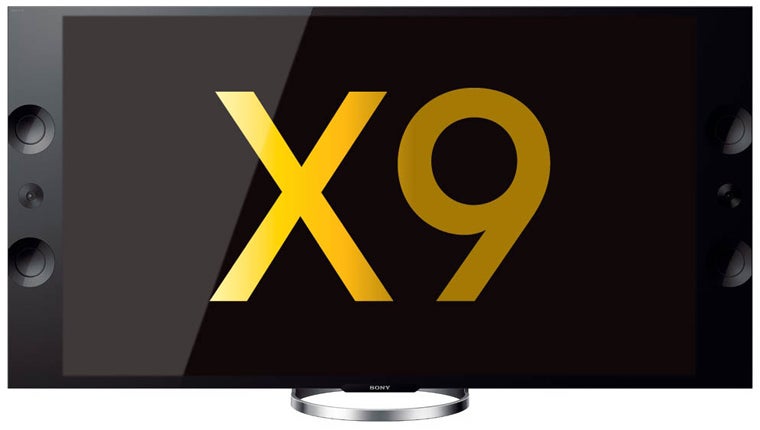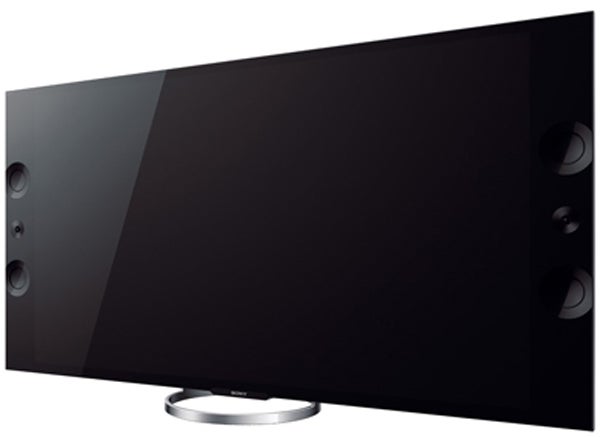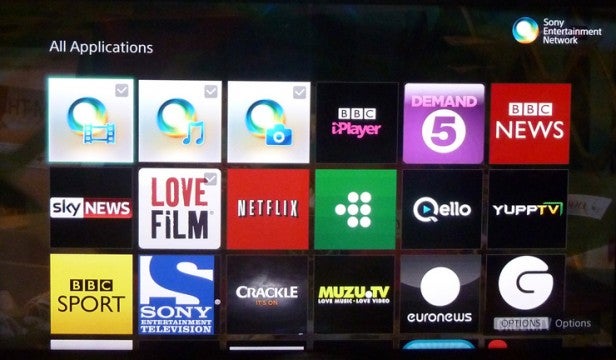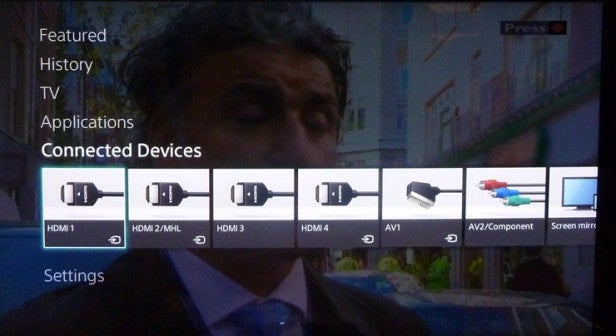Sony Bravia KD-65X9005A Review
Sony Bravia KD-65X9005A
Say hello to the first (almost affordable) major brand 4K TV

Sections
- Page 1 Sony Bravia KD-65X9005A Review
- Page 2 Panel Tech and 4K Performance Review
- Page 3 Performance and Verdict Review
Verdict
Pros
- 4K pictures make you drool
- Sound quality is outstanding
- Groundbreaking 4K price
Cons
- Some minor black level flaws
- 4K sources currently rare
Key Specifications
- Review Price: £6000.00
- 65-inch 4K native resolution screen
- Triluminos colour system
- passive 3D playback with 4 pairs of glasses included
- SEN online platform
- multimedia playback via USB and DLNA
Editorial Note:
Since this review was first published, Sony has issued an updated response to the critical issue of whether the X9005A series will be capable of working with future 4k formats. That response goes as follows:
“Sony always puts the customer as its number one priority, and Sony will provide all the necessary solutions to 4K TV owners to access future 4K content/services once they start in respective markets.”
Sony hasn’t yet backed this statement up with technical information on how potential hardware updates to the X9005A TVs might be introduced, but still – a promise is a promise! And since the lack of certainty over the 65X9005A’s compatibility with future 4K content was the main reason we only awarded the set an overall score of 9 with our initial review, following Sony’s statement of intent we do now feel it is appropriate to upgrade the 65X9005A’s overall score to a well-deserved 10.
We’ve made a couple of minor alterations to the original text below, but for the most part we’ve left it untouched aside from adding this note.
What is the Sony KD-65X9005A?
The Sony KD-65X9005A is basically the point where 4K resolution (aka Ultra HD) gets serious. Not because the other 4K TVs we’ve seen to date haven’t already dazzled us with their 4K capabilities, but because with its 65-inch screen, living room friendly design and £6,000 price tag indicate we’re getting a lot closer to 4K TVs inching towards the mainstream than before.
Does this mean you’ll walking down to your local store and walking way with a 4K TV soon? At £6,000, obviously not, but the Sony 65X9005A goes out of its way to deliver a full-on premium living room experience, rather than just being a drab rectangle that happens to have more pixels in it than usual. It is, in other words, indicative of the kind of TV that will be affordable for most people in a two years or so, and which some brave souls might consider even now, not least as the 55-inch version (Sony Bravia KD-55X9005A) costs an oh so tempting £4,000.
If 4K TV is new to you, read our guide: What is 4K TV?

Sony Bravia KDL-65X9005A – Design
Its design is spectacular. The jet-black frame around the screen is beautifully polished, while the open-frame, chrome-like circular desktop stand is remarkably small, deflecting practically none of your attention from the mighty 65-inch screen.
Also eye-catching is the silver Intelligence Centre box hanging from the TV’s bottom, which contains the TV’s uber-powerful processing chips and also changes the colour of the light it emits in line with which source you’re watching.
By far the most striking thing about the Sony 65X9005A’s design, though, is the array of open speakers that sit flush with the glass screen in two glinting black extension ‘wings’.
The way these speakers have been sculpted onto the TV’s glassy finish is visually spectacular. But more important is their potential to deliver an audio experience miles beyond anything we’d customarily expect from a flat TV.
Sony Bravia KDL-65X9005A – Speakers
For starters, they’re front mounted, meaning their sound will project straight out toward you rather than having to be fired down as happens with most flat panel TVs. Also there are three separate drivers on each side, including dedicated tweeters. Separating the speakers out in this way should help the TV deliver far greater power without disrupting clarity than any conventional TV speaker array ever could.
Last but not least where the speakers are concerned, they use Sony’s brilliant new Magnetic Fluid design, created to enable slim speaker enclosures to deliver the sort of audio range and dynamics only previously possible with large ‘box’ speakers.
Sony Bravia KDL-65X9005A – Connections
The Sony Bracvia 65X9005A’s rear contains an interesting roster of connections, including highlights of four v1.4 HDMIs, three USBs, a LAN and built-in Wi-Fi. Why is any of this especially interesting? Because the HDMIs aren’t built to the still unratified HDMI 2.0 standard, and so can’t be absolutely guaranteed to be able to deliver every 4K / Ultra HD format that might emerge in the coming years. All we can say with absolute certainty is that the HDMI v1.4 standard should deliver 4K images up to 30fps, as it does now.
It should thus be able to cope with the 24fps movie transfers currently employed with the 2K HD Blu-ray format. But there could potentially be issues with future 4K Ultra HD broadcasts if they happen and opt for a 50/60Hz format, or 4K Blu-rays if directors want to use faster frame rates, or even potentially 4K gaming if somehow next-gen gaming platforms start being able to deliver 4K experiences at 60Hz.
Pretty much everything we’ve just discussed above is pure speculation, of course. But that’s the point – right now nobody really knows how things are going to turn out. It could be that the HDMIs on the Sony Bravia KDL-65X9005A don’t prove to be a serious limitation at all.
However, we can’t just ignore the fact that, unlike the current Samsung S9 85-inch 4K TV and upcoming smaller 4K TVs, which could be upgraded using future Samsung Evolution Kits, there doesn’t appear to be any way of upgrading the hardware of the X9005A series to meet potential future connection standards.
For the record, we asked Sony for an official response to the HDMI situation, and this is initially what it said:
“The specs for the next version of HDMI have not yet been finalised nor are they official, but we expect there to be differences like there have been in previous versions. Our product development teams are always looking into ways to keep up with the ever-changing specs in technology that is used in our devices.”
This didn’t do much to clear up doubts about future 4K compatibility, and left us with a major concern about the 65X9005A’s future-proofness that affected our initial review. However, hopefully you’ve read the Editorial Note at the top of this page, and so know that since our review first appeared, Sony has pledged to support the X9005A series make sure it keeps up with future developments.
Sony Bravia KDL-65X9005A – Smart TV
The Sony Bravia KDL-65X9005A benefits from Sony’s latest much-improved interface – complete with control via iOS/Android apps and an included second streamlined remote with NFC support so you can sync NFC-enabled products to the TV just by tapping them to the remote’s rear.
The Sony 65X9005A also plays a huge range of video, music and photo files from networked PCs or inserted USB drives, and provides access to Sony’s latest SEN online platform.
This is a good platform in content terms, thanks to a focus on video apps that includes the BBC iPlayer, Demand 5, BBC News, Sky News, LoveFilm, Netflix, BBC Sport and the Sony Entertainment Television ‘channel’.
Its interface feels rather primitive in navigational terms, though. For an in-depth look at the SEN platform/interface, check out our Sony Smart TV 2013 review.

Sony Bravia KDL-65X9005A – 4K Options
Trawling the Sony 65X9005A’s onscreen menus for features related to those all-important 4K capabilities uncovers a few interesting titbits. For instance, there’s a 4K Photo Playback option. Though we’re not sure why you’d want to turn this off given that leaving it on delivers jaw-dropping effects with your digital photos – unlike the LG 84LM960V 4K TV, which bizarrely downscales them to HD and then upscales them again!.
In the Picture menu, meanwhile, the key 4K-related stuff is found in a section called ‘Reality Creation’. It’s here where you get your mitts on controllable aspects of Sony’s 4K X-Reality Pro upscaling technology. The default setting is Auto, but switching to manual enables you to adjust the output resolution of the upscaled image (we found nudging this down a bit delivered more palatable results with standard def sources), and the amount of noise filtering applied to it.
There’s also a Video Area Detection option for use with video streamed from the net, and a 4K Remaster mode which can adapt the TV’s processing to get the best results with Blu-ray titles that have been derived from 4K masters.
(While we’re on the subject of Blu-rays derived from 4K masters, Sony has confirmed that people who buy an X9005A will be entitled to eight of the upcoming new ‘4K Remaster’ Blu-rays free.)
While we appreciated all the fine tuning Sony has provided for its upscaling system, though, we’re not sure it’s necessary. We actually found that the Auto default mode was slightly more effective than the auto mode used its previous 4K TV, the Sony 84X9005A, as it doesn’t over-sharpen images to the point where they started to look too noisy.
Other picture fine tuners not directly related to 4k include a system
for smoothing colour gradations, a separate detail enhancer, an
(eminently avoidable) edge enhancer, dynamic contrast controls, controls
for the dot and noise reduction systems, multiple settings for Sony’s
mostly impressive MotionFlow system, and a full suite of colour
calibration tools.
How we test televisions
We test every TV we review thoroughly over an extended period of time. We use industry standard tests to compare features properly. We’ll always tell you what we find. We never, ever, accept money to review a product.


